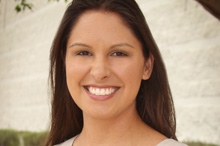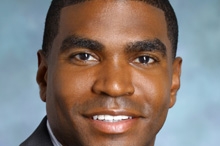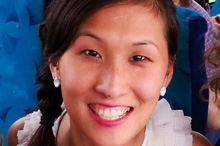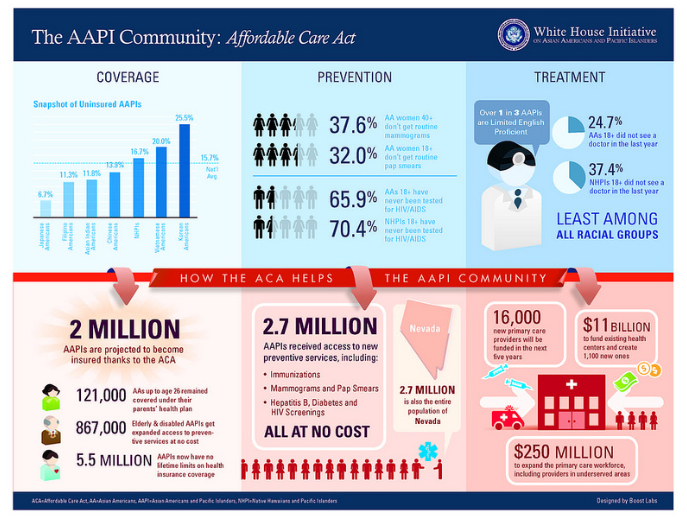Champions of Change Blog
Nominate a White House Champion of Change for AAPI Affordable Care Act Outreach
Posted by on February 12, 2014 at 5:45 PM EDTFor too long, many members of the Asian American, Native Hawaiian, and Pacific Islander community have lacked access to quality, affordable health care. Consider this: one in four Korean Americans is uninsured; nearly 40% of Asian American women over the age of 40 don’t get routine mammograms; one in four Asian Americans over the age of 18 – and one in three Native Hawaiians and Pacific Islanders – have not seen a doctor in the last year.
The Affordable Care Act provides an opportunity to provide nearly two million uninsured Asian Americans and Pacific Islanders with quality, affordable health care – but these individuals won’t gain access to affordable health care unless they know about the benefits of the Act and how to enroll for coverage.
Since open enrollment in the Health Insurance Marketplace kicked off on October 1, 2013, thousands of community advocates, direct service providers, and community based organizations have stepped up to help AAPIs gain access to health insurance, many for the first times in their lives. They have knocked on doors, educated their friends and neighbors, and helped individuals and families enroll through HealthCare.gov.
The dedication, commitment, and passion of these “Champions of Change” is worth celebrating – and that’s why we need your help!
We’re asking YOU to nominate an individual or organization as a “White House Champion of Change” for their work to educate AAPIs on the Affordable Care Act. You can nominate Affordable Care Act navigators or consumer assisters, direct service providers, staff of community-based organizations, and other individuals or entities that have focused their Affordable Care Act outreach and enrollment efforts on ensuring that AAPIs will fully benefit from health reform. We need your help to nominate the leaders and heroes who have developed best practices that contributed to the success of Affordable Care Act outreach for the AAPI community.
There are three main categories that you can nominate someone for:
- Educators, Assisters, and Navigators. Recognizing individuals who have gone above and beyond the call of duty to educate, assist, and enroll AAPI individuals and families. Their efforts have helped AAPIs understand the Affordable Care Act and ensured that they benefit from this historic law.
- Emerging Community Leaders. Individuals and organizations focused on emerging communities, for example, small, rural, and newly immigrated AAPI communities. These leaders have gone the extra step to ensure that limited English proficient, newly arrived immigrant and refugee families, and AAPI individuals in locations without access to navigators able to provide in-language support, can learn about and enroll in health insurance plans.
- Expert Communicators. Individuals who have developed top-notch outreach and communication strategies to ensure that AAPIs can read, hear, and learn about the benefits of the Affordable Care Act. Their communications strategies included activities such as developing in-language resources, developing written, oral, and media-friendly materials, and working with community groups, faith communities, and ethnic media to reach AAPI communities across the country.
When sending in your nominations, please describe the individuals and communities that the Champion of Change has helped, providing as much detail as possible. In addition, make sure to highlight the best practices they used to be creative, effective, and impactful in their Affordable Care Act education, outreach, enrollment, and/or communication efforts.
Nominate an AAPI Affordable Care Act Outreach Champion of Change
NOTE: Nominations are now due no later than Wednesday, March 5, 2014.
Gautam Raghavan is an Advisor in the White House Office of Public Engagement.
Learn more aboutEngaging the Next Generation of Conservation Leaders
Posted by on February 12, 2014 at 4:12 PM EDTPresident Obama has long recognized the importance of engaging and developing the next generation of outdoor enthusiasts and environmental leaders. In 2010, he established the America’s Great Outdoors Initiative to help reconnect Americans, especially children, to our country’s rivers and waterways, farms and forests, and to our unparalleled local and national parks. As one of his first actions under this initiative, the President created the 21st Century Conservation Service Corps to provide quality jobs, career pathways, and service opportunities for youth and veterans.
Through the championship of Interior Secretary Sally Jewell, Agriculture Secretary Tom Vilsack, and Cabinet Secretaries across agencies, we are fostering a new generation of wildlife biologists, park rangers, climate scientists and other professionals to care for our lands and waters. And throughout the Administration – including at the Departments of the Interior, Agriculture, Commerce, Labor, Army and the Environmental Protection Agency and Corporation for National and Community Service – we are working to create more opportunities for young people to play, learn, serve and work on our public lands.
Learn more aboutNominate a White House Champion of Change for Gun Violence Prevention
Posted by on January 8, 2014 at 12:00 PM EDTIn mass shootings and in the everyday shootings that plague communities across the country, far too many Americans have been severely injured or lost their lives or a loved one as a result of gun violence. Over the last few years, a series of gun-related tragic events galvanized our country and led this Administration to redouble our efforts to keep guns out of the hands of potentially dangerous individuals.
Over the past year, the Administration has taken several steps to strengthen the National Instant Criminal Background Check System (NICS), which is used to run background checks on those who buy guns from federally licensed gun dealers to make sure they are not prohibited by law from owning a firearm. Just this month, the President took two new executive actions that will help ensure that tens of thousands of missing mental health records are added to the background check system. The Administration also continues to call on Congress to pass common-sense legislation to expand background checks. To date, background checks have prevented over two million guns from falling into the wrong hands.
While the President and the Vice President will continue to do everything they can to reduce gun violence, we know efforts to prevent gun violence at the state and local levels – at community centers and recreational facilities, schools, faith-based centers and by other various community leaders often have the most impact. The leaders who are creating change know that when 90% of the American public supports common-sense gun safety legislation, those 90% need to stand up. Every day, these individuals are stepping up in big ways in our communities to make sure that all Americans can feel safer when they put their children to bed each night, and when they step outside with their families in the morning.
Today, we’re asking you to help us identify and honor state and local leaders taking innovative approaches to support gun violence prevention measures and make our communities safer by nominating a Champion of Change for Gun Violence Prevention by midnight on Sunday, January 12th. Nominees may include:
- Community leaders who worked to prevent gun violence and build safer communities.
- Citizens who encouraged responsible gun ownership.
- Advocates who fought for stronger state and federal gun laws.
- Community leaders who helped to organize grassroots efforts around this issue.
- Citizens who created innovative tactics to engage the public to reduce gun violence.
- Community/youth development programs discouraging gun violence and college students’/groups’ efforts on campuses.
Click on the link below to submit your nomination (be sure to choose Gun Violence Prevention in the "Theme of Service" field of the nomination form).
Click here to nominate a Gun Violence Prevention Champion of Change
We are looking forward to hosting this event and to highlighting the great work communities across the country are doing to advance the health, safety and well-being of the American people.
Rumana Ahmed is the Executive Assistant to the Director of the Office of Public Engagement.
Learn more aboutDigital Connectivity Builds Classroom Etiquette
Posted by on November 26, 2013 at 5:46 PM EDT
Misa Gonzales is being honored as a Connected Educator Champion of Change.
In the first part of my teaching career I did not have a guaranteed student base. I had to work to fill my classes, and work to keep my students coming back every week. I have kept that philosophy while teaching high school, and the use of technology in my classroom is one of the ways I interest my students in the worlds of reading and writing.
There are three things that are amplified when technology is used in an effective and efficient way in a classroom: the organization of the classroom, the communication within the classroom, and the community formed in the classroom. Without organization, it becomes chaos and teachers have been searching for years for a way to stay organized, but it never quite works. With a connected technology system, students can save all files, folders, and videos in the cloud and their items are never lost. The dog can never eat the homework, and if he happens to eat the laptop, the homework is still accessible on any other computer or cellphone connected to the internet.
This ability to seamlessly organize between student and teacher allows for a level of communication in the classroom that has never before been achievable. Through Google Docs a teacher can pull up a student’s essay, and can watch them type. He or she can monitor and adjust the student’s understanding as the student progresses through a paper, and when a cursor bar stops for an extended amount of time the teacher can check in with the student. Instant feedback through Google tools provides students with the ability to achieve their full potential. Communication through technology has allowed online collaboration between students to expand beyond traditional walls of the classroom.
The student’s ability to research across the world from cellphones and laptops has produced extensive opportunities to meet and work with other cultures and communities, and an ability to expand beyond the limitations of a traditional textbook. Students are never limited to what the teacher or the district knows, but are instead able to live and learn in a personalized learning environment. And finally, a whole new type of community is built and strengthened when students are guaranteed to have 100% digital connectivity, thus giving them the world at their fingertips, and allowing them to explore new cultures.
Organization, communication, and community build a bond of respect, trust, honor, and belief in my classroom. I believe in my students, I believe in their futures. I expect my students to walk out of every class with a feeling that they have completed something, a feeling of accomplishment. I will give you the numbers that are the most prominent in my classroom. I have 100% engagement in my room 100% of the time, and with that I also have a 100% turn in rate for all student work, and this is accomplished by 100% digital connectivity for all of our amazing students.
The technology that we use in my classroom helps to move my students forward at a pace that cannot be reached with the traditional paper and pencil format. My students have the accessibility of the world at their fingertips, and the ability to communicate through digital media like no other generation before them.
Misa Gonzales is a Freshman English teacher, at Desert View High School, in the Sunnyside School District, in Tucson Arizona. She graduated with her bachelor’s degree from the University of Arizona in Secondary Education, Extended English in 2011.
Learn more about EducationCreating a 1:1 Learning Environment
Posted by on November 26, 2013 at 5:42 PM EDT
S. Dallas Dance is being honored as a Connected Educator Champion of Change.
A cartoon that I share in some of my presentations shows a class full of students. Each one of them is fully engaged in an activity – like passing notes, eating, drawing, yawning, whispering – but none of them, in many cases including the teacher, is fully engaged in teaching or learning. This is, of course, not a cartoon about Baltimore County Public Schools (BCPS), but it is a cartoon about the challenge before all educators to make learning relevant and effective for each student. The cartoon highlights that the old format of a teacher at a desk in the front of the room and students seated at rows of desks awaiting a lecture is disconnected from who our students are, how they learn, and what they need.
When I arrived just last year to assume the superintendency of BCPS, I was fortunate to join an already strong school district with a legacy of high achievement. More than half of our high schools rank among the best in the nation; our arts and music programs are award-winning; and our graduation rate, among large districts, is second-highest in the nation, according to EdWeek.
But being good on average is not the same as being effective for every student, and we have a moral and social imperative to ensure that every student graduates globally competitive. What I call my reasonable impatience about this has only grown more intense since I became a father. I want for every child the same as I want for my own son, and I realized, as I nurture his growth, that we have only one chance to get it right for our students.
I have focused my BCPS administration on building the collective will to pursue deliberate excellence for our students and putting the physical and programmatic structure in place to facilitate achieving our goals. Through meetings, information sharing, and collaborative decision making, we are uniting the entire community into Team BCPS.
This team helped us develop our theory of action and Blueprint 2.0, our five-year strategic plan, which calls for, among other initiatives, an instructional digital conversion to a 1:1 learning environment and an expanded world languages program so that our students can graduate fluent in a second (or third) language.
Learning via technology has multiple benefits: allowing students access to more accurate and timely information and to other teachers and learners around the globe; personalizing the pace of learning for each student; providing instant feedback and assessments for students and teachers; supporting inquiry-based learning and the development of 21st century skills like critical thinking, creativity and collaboration; and using the technology in which students are already immersed to better engage them in their school work.
Moving to a 1:1 environment also levels the playing field – which is the role of public schools. All students need meaningful access to technology for 24/7 learning to occur. Without a 1:1 environment in our schools, there is still a digital divide between those who have access to computers and the Internet and those who do not. We plan to close the digital divide in our schools.
The other major component of the BCPS theory of action is supporting students in becoming proficient in a second language. We know that this is another essential factor in being globally competitive, and research tells us that students who begin learning a second language before adolescence are more likely to become fluent speakers and to have higher overall academic achievement.
By pairing expanded world languages instruction with 1:1 environments, we will create classrooms that will be the opposite of the cartoon I described earlier – 21st century classrooms where teachers guide students toward higher levels of academic rigor and success.
S. Dallas Dance is the superintendent of Baltimore County Public Schools, the nation’s 26th largest school system.
Learn more about EducationGaining Global Perspective through Technology
Posted by on November 26, 2013 at 5:31 PM EDT
Jennie Magiera is being honored as a Connected Educator Champion of Change.
Classroom Technology is just window dressing; Twitter is for Bieber-loving teens; social networks have no place in schools. These are all opinions I firmly believed less than four years ago. However, in the fall of 2010, I found myself with 32 iPads in my classroom. I spent the first three months floundering to find effective strategies to use these devices. After some time, I realized that I couldn’t do this in a vacuum; I needed support from my colleagues. But as the only iPad teacher in the school, I couldn’t simply go next door and ask for help. I needed a way to reach beyond the walls of my classroom and my building, in order to connect with other iPad-using teachers from around the globe.
This was the beginning of my rebirth as a Connected Educator. In the next few months, I began to subscribe to blogs, join listservs, and enter online communities of educators. In June, I even created a Twitter account. Perhaps a telling example of my shift in thinking, my first tweet, posted on June 7, 2011, was about connecting my students digitally: “Trying out back channel student discussions via twitter... so far so good! Kids are really engaged! And QUIET!!!”
Suddenly my classroom wasn’t about closing the door, teaching a “good” lesson, and then testing my students to see if they “got it.” Instead, the world was my classroom and the globe was our community. This was huge for a fourth grade classroom in an inner-city Chicago school. Students who rarely travelled out of a 15-block radius were suddenly able to connect with nine-year-olds from Brazil. I was able to bring an archeologist into my room via Skype to weigh in on our rock cycle unit. We streamed footage of the Space Jump to explore the layers of the atmosphere. My students hopped on a Google Hangout with another Chicago class to discuss violence in their community.
My students weren’t the only ones who benefitted from this new “connected” mindset. Thanks to those blogs, listservs, online communities and yes, Twitter, everyone on the web was my colleague or co-teacher. I got feedback from teachers in Seoul, Melbourne, and Montreal on my first Problem Based Learning unit. I joined various Google Hangouts to problem solve issues in my classroom. I worked with six teachers from three countries to share this experience by creating courses on iTunes U about teacher professional development strategies. And most recently, I was honored to work with an incredible group of educators to support and promote Connected Educator Month on Google+ and other online platforms.
Beyond enriching my teaching practice and my students’ learning experiences, becoming a Connected Educator has helped me become less myopic about what teaching and learning can look like. I have gained a more global perspective on the classroom and realized that one way of doing things is not the only way to do them. I’ve also gained an international posse of friends, changemakers, and edu-avengers. These are people who want to improve education for our students and who make strides to take idea into practice every day. They keep me inspired, vet my ideas and push me to never settle. I’ve learned that our best isn’t good enough - we must always be improving, asking questions and making new connections - all to support our students’ growth into the best version of themselves.
Jennie Magiera is the Digital Learning Coordinator for a network of 29 Chicago Public Schools, called the Academy for Urban School Leadership. She works to support teachers, students and school leaders to leverage digital tools in improving teaching and learning.
Learn more about Education
- &lsaquo previous
- …
- 32
- 33
- 34
- 35
- 36
- 37
- 38
- 39
- 40
- …
- next &rsaquo
White House Blogs
- The White House Blog
- Middle Class Task Force
- Council of Economic Advisers
- Council on Environmental Quality
- Council on Women and Girls
- Office of Intergovernmental Affairs
- Office of Management and Budget
- Office of Public Engagement
- Office of Science & Tech Policy
- Office of Urban Affairs
- Open Government
- Faith and Neighborhood Partnerships
- Social Innovation and Civic Participation
- US Trade Representative
- Office National Drug Control Policy
categories
- AIDS Policy
- Alaska
- Blueprint for an America Built to Last
- Budget
- Civil Rights
- Defense
- Disabilities
- Economy
- Education
- Energy and Environment
- Equal Pay
- Ethics
- Faith Based
- Fiscal Responsibility
- Foreign Policy
- Grab Bag
- Health Care
- Homeland Security
- Immigration
- Innovation Fellows
- Inside the White House
- Middle Class Security
- Open Government
- Poverty
- Rural
- Seniors and Social Security
- Service
- Social Innovation
- State of the Union
- Taxes
- Technology
- Urban Policy
- Veterans
- Violence Prevention
- White House Internships
- Women
- Working Families
- Additional Issues


